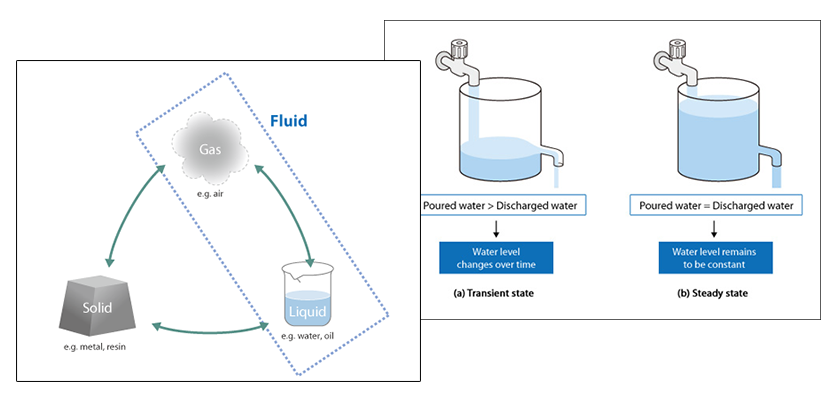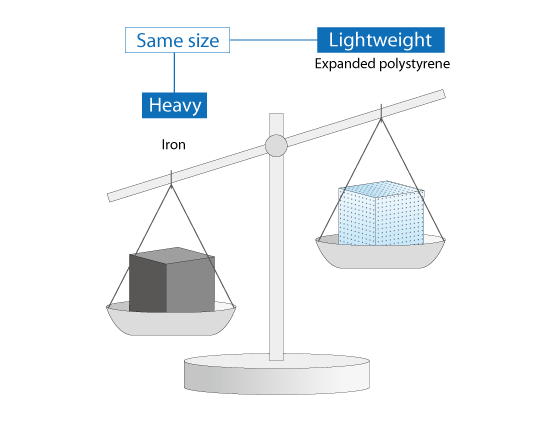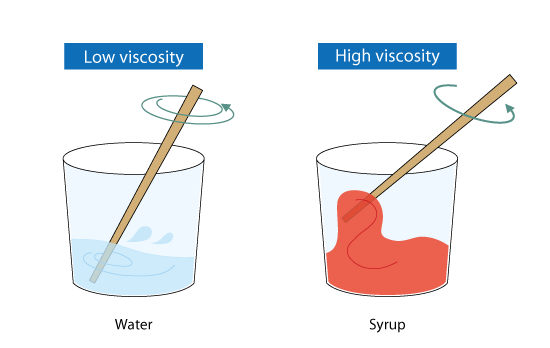Basic Course of Thermo-Fluid Analysis 02: Chapter 2 Material Properties - 2.1 Density, 2.2 Viscosity coefficient

Chapter 2 Material Properties I
This chapter describes the role of material properties used in a thermo-fluid analysis . The property of a material describes its characteristics and behaviors, and is specified by a numerical value that can be either calculated or found in available textbooks or reference manuals. The value of the material property is often not a constant but can vary depending on the conditions, e.g. temperature and pressure. Some examples of material properties are shown below. Notice how a large or small value of the material property helps you understand the characteristics and behaviors of the material. All units are expressed in SI units.
2.1 Density
Density is a material property. The density of a substance is its mass per unit volume and the unit of density is kg/m3. Consider the density of iron and expanded polystyrene as examples. Even if iron and expanded polystyrene are the same size, you can easily imagine that their masses are significantly different. The difference is caused by the difference in their densities. The density of expanded polystyrene is approximately 30 kg/m3 while that of iron is 7,870 kg/m3.

Figure 2.1: Density difference
We often don't consider the density of the gas and fluid streams that surround us in our daily lives. However, both air and water also have mass and density. The density of dry air (air without any water vapor in it) is approximately 1.206 kg/m3 at 1 atmospheric pressure and 20 º C. On the other hand, the density of water is 998.2 kg/m3, nearly 1,000 times greater than the density of air. The density of an object greatly affects the amount of impact when the object is in motion. For a beach ball and a bowling ball rolling with the same velocity, the bowling ball can apply more power to an object because its density is higher and it weighs more. In the same way, when air and water flow with the same velocity, water, which has greater density, can apply more power to an object.
2.2 Viscosity coefficient
Viscosity is a material property that is specific to fluids. If you stir water and then you stir syrup, you'll need more force to stir the syrup. This is because the syrup is thicker than water and more resistant to motion. The viscosity is used to characterize a fluid's resistance to motion. Viscosity coefficient indicates the degree of viscosity and its unit is Pa・s.

Figure 2.2: Viscosity difference
A fluid's viscosity tends to regulate its flow. For example, when you stop stirring water in a bucket, the water's viscosity is what causes the water motion to gradually slow. The slowing-down starts from the outer diameter that is in contact with the wall of the bucket. The effect of viscosity on the flow of a fluid is also dependent on the fluid's density. A lightweight (low density) fluid will be more influenced by viscosity than a heavy fluid. Kinematic viscosity coefficient expresses the relationship between a fluid's density and viscosity. It is calculated by dividing the viscosity coefficient by the fluid density. Its unit is m2/s.

About the Author
Atsushi Ueyama | Born in September 1983, Hyogo, Japan
He has a Doctor of Philosophy in Engineering from Osaka University. His doctoral research focused on numerical method for fluid-solid interaction problem. He is a consulting engineer at Software Cradle and provides technical support to Cradle customers. He is also an active lecturer at Cradle seminars and training courses.


